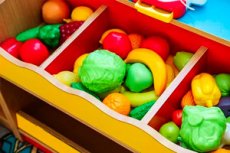New publications
Children's toys are potentially dangerous
Last reviewed: 02.07.2025

All iLive content is medically reviewed or fact checked to ensure as much factual accuracy as possible.
We have strict sourcing guidelines and only link to reputable media sites, academic research institutions and, whenever possible, medically peer reviewed studies. Note that the numbers in parentheses ([1], [2], etc.) are clickable links to these studies.
If you feel that any of our content is inaccurate, out-of-date, or otherwise questionable, please select it and press Ctrl + Enter.

The vast majority of plastic children's toys pose a potential danger to children. This problem has worried scientists since the invention of plastic. Recently, experts conducted a study that only proves the increased likelihood of risks to children's health.
In an international format, scientists studied the chemical composition of toys from different manufacturers and assessed their possible impact on children. As a result, they found more than a hundred potentially dangerous compounds that pose a significant degree of risk.
"Of the more than four hundred chemicals present in materials of different densities and structures, we identified 126 compounds with potential carcinogenic and non-carcinogenic effects. Among them are more than 30 plasticizers, 18 flame retardants and 8 fragrances," said Dr. Peter Franke, an employee of the Technical University of Denmark.
According to experts, many countries are reviewing and monitoring the permissible composition of plastic toys. However, there is no unified register of permitted chemical compounds at the international level. "Existing international standards do not cover the entire spectrum of chemicals that can be found in toys," say scientists. "In addition, plastic can also contain some obviously toxic and prohibited compounds that end up in products after recycling plastic waste, which indicates both negligence and ignorance of manufacturers, or non-compliance with standards in some countries," explain the researchers.
To clarify the extent of the danger, experts identified a list of chemical compounds found in toys. They then combined information about the chemical composition of the products with factors such as how long children play with one toy, the likelihood that a child will put it in their mouth, and the approximate number of similar toys in one child's room. As a result, 126 compounds in plastic were recognized as dangerous. In addition, 27 chemicals that have already been banned for use in children were identified (despite this, they were still present). Some components were listed as "possibly dangerous" - 17 of these were found.
Scientists are unable to influence manufacturers and ban the production of plastic toys. They strongly advise parents to minimize the presence of such products in the home so as not to endanger the health of the child. Ordinary users cannot know what is contained in a seemingly harmless toy. But the consequences can be extremely negative: from allergic processes and atopic dermatitis to severe intoxication and the development of malignant diseases.
The existing danger is reported by ScienceDirect
